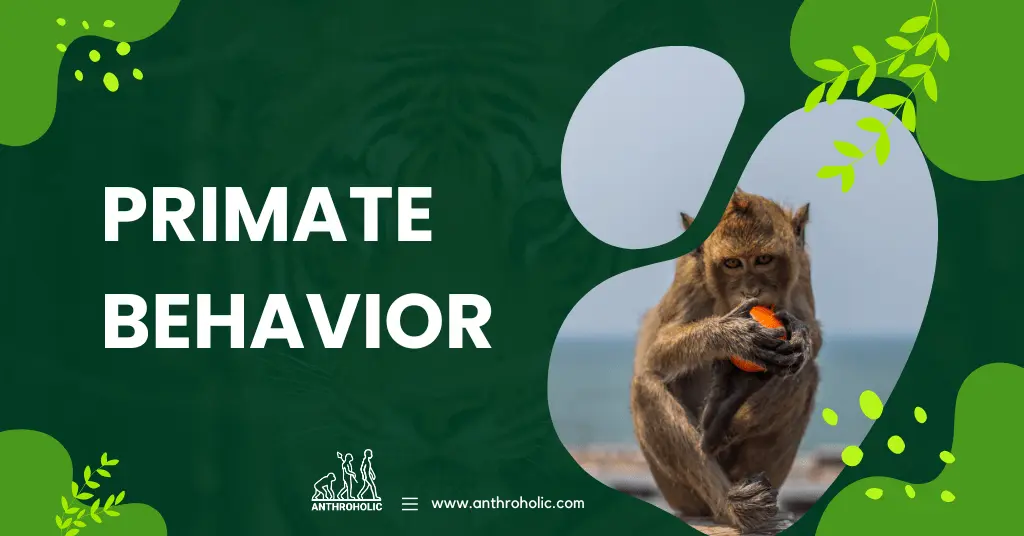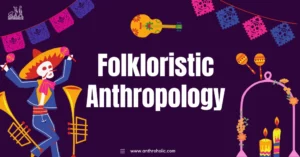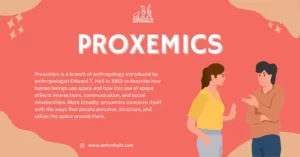AI Answer Evaluation Platform Live Now. Try Free Answer Evaluation Now
Primate Behaviour
Primates are a group of mammalian species that are closely related to humans, sharing significant portions of our genetic code. This genetic kinship has been the subject of intensive research and has helped unravel the mysteries of our evolutionary past. Studying primate behaviour provides an anthropological mirror into our evolutionary roots, revealing insights into human social, cognitive, and cultural phenomena [1].

The Art and Science of Social Grooming
- Among primates, social grooming or allogrooming is more than a meticulous act of cleaning.
- It serves as a fundamental social activity, mirroring aspects of human socialization and communication.
- Primates spend a considerable portion of their day grooming each other, establishing and reinforcing social bonds.
- The act can represent a form of social currency, with individuals often reciprocating grooming favors.
- In this exchange, primates not only reinforce existing relationships but also create new ones, build trust, and establish social hierarchies.
- Therefore, grooming among primates could be seen as a social activity carrying emotional and evolutionary significance [2].
Conflict and Its Resolution
Interpersonal conflict is an inherent aspect of group living, as individual needs and desires invariably clash in any society, human or non-human. Primates, much like humans, often find themselves in situations that can lead to confrontation, be it competition for food, mating partners, or higher social standing. However, what sets primates apart from many other animals is the sophisticated suite of behaviors they exhibit to mitigate, manage, and resolve these conflicts. This intricate system of conflict resolution among primates offers valuable anthropological insights, underlining their social intelligence and hinting at the evolutionary origins of our own peacekeeping strategies [3].
The foundation of conflict resolution in primates lies in the understanding that harmonious group living is beneficial for survival. Persistent aggression and social tension can destabilize the group, impair cooperation, and create a hostile environment that could potentially attract predators or lead to resource scarcity. Therefore, primates have evolved various strategies to reduce the impact of conflict and restore social equilibrium.
Vocal and Non-Vocal Communication
- Primate communication is a rich tapestry of vocalizations, body language, facial expressions, and gestures.
- Some species have alarm calls specific to different types of predators, exhibiting their ability to categorize threats and communicate them to group members effectively.
- Gibbons, for instance, use complex songs for pair bonding and territorial defense.
- Beyond vocal communication, facial expressions and body language also play a crucial role in conveying emotions and intentions, especially in close-range interactions.
- The complexity of communication systems among primates echoes human communication intricacies, further narrowing the perceived cognitive gap between humans and other primates [4].
Cognitive Abilities and Tool Use
The cognitive abilities of primates, particularly their use of tools, have been a subject of fascination and extensive research in anthropology and cognitive science. Tool use, once considered a defining characteristic of Homo sapiens, has been observed in several primate species, such as chimpanzees, orangutans, and capuchin monkeys. This behavior not only indicates advanced cognitive abilities, but it also suggests the presence of culture and the ability to learn from others, hallmarks of human societies [5].
Primate tool use is innovative, flexible, and often involves the modification of objects in the environment to achieve specific goals. It has been observed both in captive studies and in the wild. For instance, chimpanzees have been seen using sticks to fish termites out of their mounds, an activity that requires understanding the relationship between the tool, the target, and the desired outcome. They have also been seen using rocks to crack open hard-shelled fruits and nuts, displaying an understanding of the principle of mechanical force.
The Dynamics of Social Hierarchy and Mating Behaviors
In primate societies, the hierarchical order plays a significant role in defining an individual’s access to resources, mating opportunities, and overall social standing.
- For example, in gorilla groups, the silverback – the eldest and most physically dominant male – occupies the highest rank.
- The silverback takes on the role of a protector, decision-maker, and has exclusive mating rights with females in the group.
The structure of these hierarchies can vary widely across primate species, influenced by factors such as group size, food availability, and predation pressure. Mating behaviors among primates are equally diverse and fascinating, ranging from the monogamous pairings of gibbons to the multi-male, multi-female groupings of baboons and bonobos. These mating patterns are often shaped by the need to maximize reproductive success while balancing the costs and benefits associated with different mating strategies [6].
Conclusion
The rich tapestry of primate behavior, from social grooming to tool use, from sophisticated communication to complex mating strategies, serves as a reflection of our evolutionary past and a mirror to our inherent biological predispositions. Furthering our understanding of these behaviors can help bridge the perceived cognitive gap between humans and other primates and provide valuable insights into the evolutionary forces that shaped our own species.
References
1. Strier, K. B. (2016). Primate Behavioral Ecology. Routledge.
2. Dunbar, R. I. (2010). The social role of touch in humans and primates: Behavioural function and neurobiological mechanisms. Neuroscience & Biobehavioral Reviews, 34(2), 260-268. https://pubmed.ncbi.nlm.nih.gov/18662717/
3. de Waal, F. B. (2000). Primates–a natural heritage of conflict resolution. Science, 289(5479), 586-590.
4. Seyfarth, R. M., & Cheney, D. L. (2017). The evolution of language from social cognition. Current Opinion in Neurobiology, 46, 49-57.
5. Tomasello, M., & Call, J. (1997). Primate cognition. Oxford University Press.
6. Dixson, A. F. (2012). Primate Sexuality: Comparative Studies of the Prosimians, Monkeys, Apes, and Humans. Oxford University Press.




